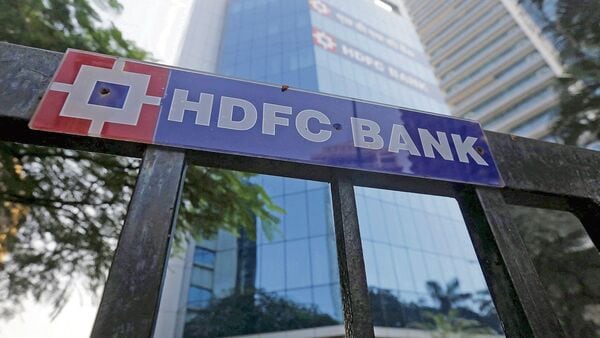Why HDFC Bank shares Plunge 62%? Know All Details

Why HDFC Bank shares Plunge 62%? Know All Details
The lender’s stock price drop is only a technical adjustment following its 1:1 bonus share issue — not a reflection of weakening fundamentals.
Shares of HDFC Bank, India’s largest private sector lender, appeared to plunge sharply on Tuesday, sparking alarm among some investors. However, the decline was purely optical, triggered by the bank’s 1:1 bonus share issuance, which saw its stock trade ex-bonus on both the NSE and BSE.
Why the sudden fall?
On Monday, HDFC Bank’s stock closed at ₹1,964.50 on the BSE. But after markets opened on Tuesday, the price automatically halved in line with the bonus adjustment. On some trading platforms, this showed up as a sudden fall of nearly 50–62%, but in reality, investors’ overall wealth was unaffected since they received an equal number of new shares free of cost.
How bonus shares work
- Bonus ratio: HDFC Bank issued shares in a 1:1 ratio — one free share for every share held.
- Impact: While the stock price adjusts downward, the number of shares in an investor’s portfolio doubles, leaving the overall value unchanged.
- Effect on financials: Bonus shares reduce a company’s free reserves and lower earnings per share (EPS), but they do not dilute equity or dividend entitlement.
Recent parallels
Similar corporate actions have been carried out this year by other BSE500 companies, including Nestle India, Bajaj Finance, Ashok Leyland, and Samvardhana Motherson International. For example, Ashok Leyland’s stock fell from ₹250.85 to ₹125.70 after its ex-bonus date — an apparent crash that was simply a technical adjustment.
Bonus vs. stock split
- A bonus issue rewards shareholders with free shares, drawn from a company’s reserves, without changing face value.
- A stock split divides existing shares into smaller units to boost liquidity, reducing face value proportionally.
Fundamentals remain strong
Despite the optical fall, HDFC Bank’s financial outlook remains robust. S&P Global recently reaffirmed expectations that the bank will maintain its strong market position, solid capitalization, and low credit costs over the next two years. It also highlighted the lender’s strong governance and above-average financial performance.
The apparent “62% crash” in HDFC Bank stock is not a sign of weakness but a result of the bank’s bonus issue. Investors’ holdings remain intact, only the share price has been adjusted to account for the additional stock.












